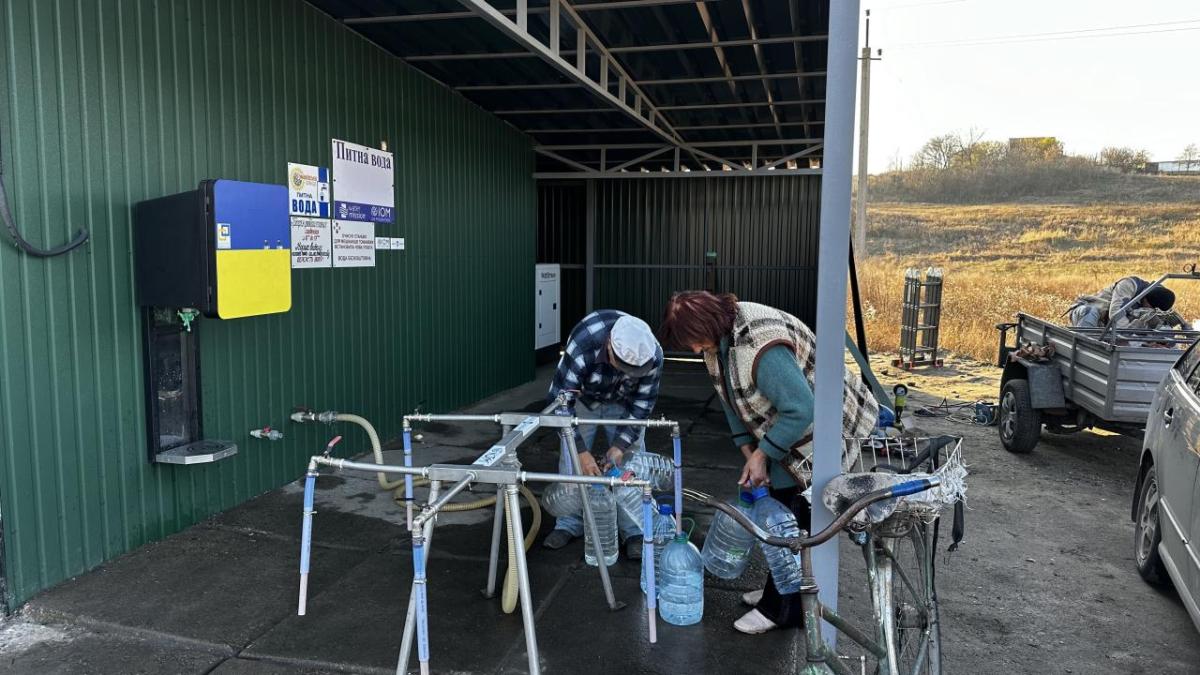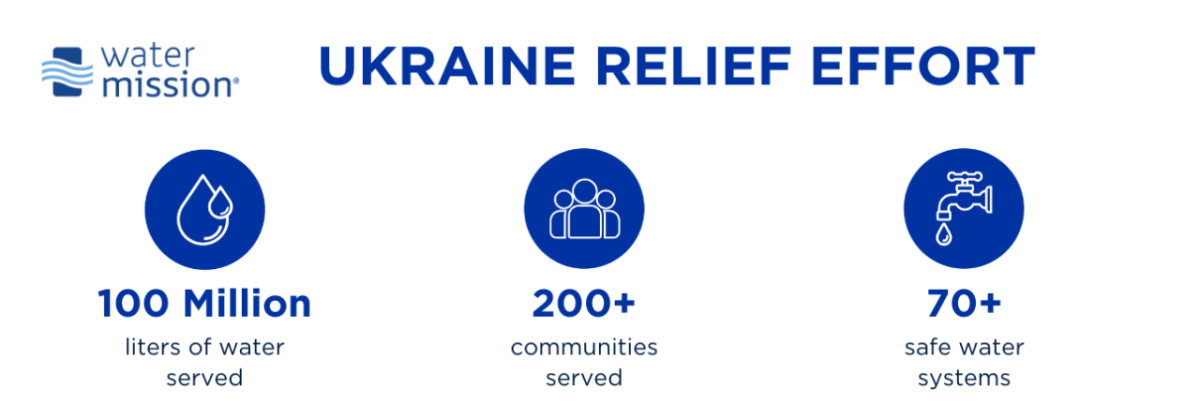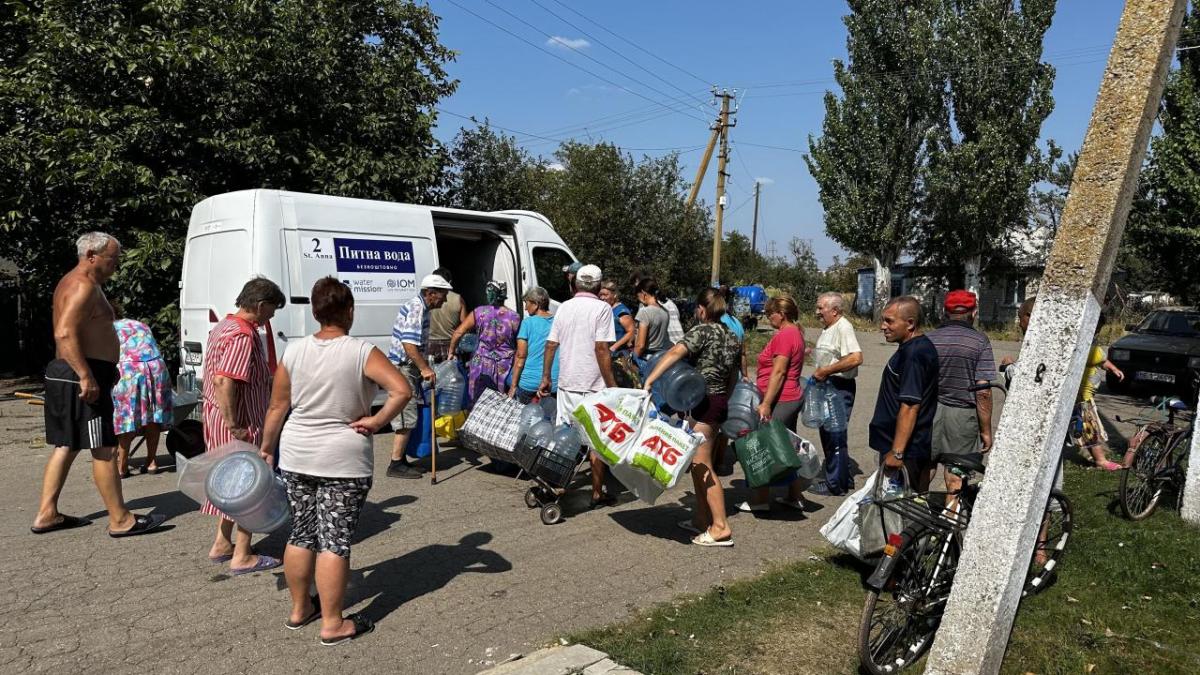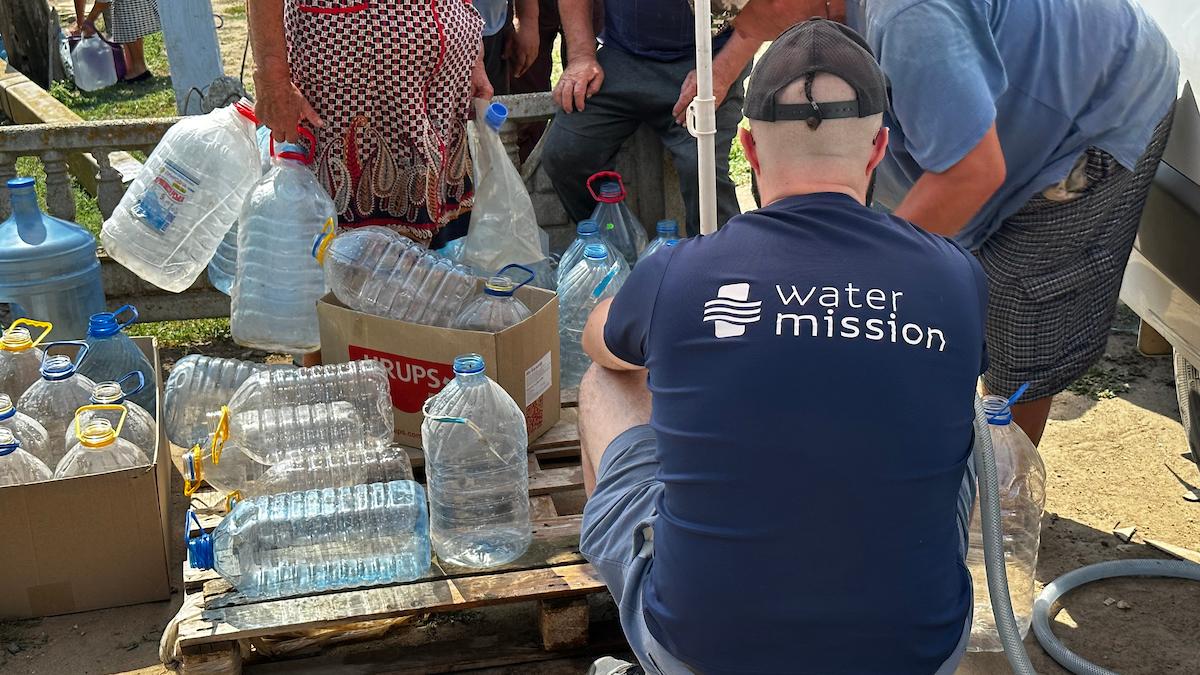Water Mission Saves Lives in Ukraine With Support From FedEx
Authored by Water Mission
It’s been just over two years since the Russian military invaded Ukraine on February 24, 2022. Although fighting continues at an alarming rate, the world’s attention has been drawn to additional emergent humanitarian crises. Much less is reported about this ongoing war, yet the struggle to find water, food, shelter, and safety remains a daily challenge for more than 14 million people.
As aid funding for non-governmental organizations (NGOs) is diminishing and many organizations are leaving Ukraine, Water Mission remains committed to strengthening efforts to provide safe water to people in need. Thanks to the ongoing cash and in-kind transportation support from FedEx, nearly 100,000 people in more than 200 communities in southeastern Ukraine have access to lifesaving safe water. Water Mission has more than 70 safe water systems established, including a mix of fixed and mobile safe water systems. As the war continues, the demand for safe water will increase.
Water Mission Project Manager and Global Emergency Coordinator Craig Williams has been living in Ukraine and working to bring safe water to those in need throughout this conflict. He shares an insider’s perspective on the realities of life in a war zone and how Water Mission and its supporters like FedEx are saving lives through the provision of safe water.
Reflections by Craig Williams
Life in a War Zone
People are tired and living with more uncertainty than they ever imagined was possible. Families have been split up. Many of the men who have managed to find jobs are in constant fear of being sent to training camp. Sadly, everybody seems to know somebody who has died in this war. Conversely, you also see life in Kyiv and Lviv trying to blossom. Young people hang out in shopping malls, and parents push children in strollers or walk their dogs. Then the air alarm goes off, reminding you that life isn’t normal. But the parents pushing the strollers or playing with their kids don’t even change the pace at which they walk. The sirens are their new normal. People look at apps to self-assess the risk and then move on like nothing is happening.
Impacting Lives with Safe Water
People without water can spend their days searching for it. When Water Mission provides water, however, it gives many people the time to work and provide for their family. Their appreciation is amazing. Water Mission has been blessed with good donors, strong partners, and an incredible local team. We have now produced more than 26 million gallons (100 million liters) of safe drinking water across more than 70 water systems installed.
This is a frontline program reaching people whose water supply was impacted by the war, people in areas that were previously occupied, and those who are still under attack. With critical infrastructure lost in these areas, people are left with few options for meeting their basic needs.
Sometimes, there is distrust about our motives. People wonder why we would do something for them without expecting something in return. But over time, as people see our technicians working with love, excellence, and integrity and spending time in the community, trust is earned. Our mobile van program, which has served more than 200 communities, has been a very powerful force for us in many villages.
More than 500 gallons (2,000 liters) of safe water is produced every hour and shared with people who gather at the van stop in each community. They recognize the brand and we have built relationships. A common sentiment we hear is, “You came at our greatest time of need, and you are still here.”
Safe Water for the Future
Most disaster responses have a very clear timeline for moving from immediate response into recovery. Ukraine is a unique case as response and recovery are fluid concepts. The frontline remains in response while cities like Mykolaiv are now in recovery. But it only takes one night of attacks and Mykolaiv can be right back in response. So, we are looking at longer-term sustainability of water supply, not just for our systems but also in new locations, like schools and hospitals.
Our emphasis is on collaboration. We work closely with the local government, from the national ministry down to village administrations. Additionally, we are engaged with the United Nations (UN)—primarily with UNICEF and cluster coordinators— and share information and ideas with other NGOs helping involved in the area as well.
Ukrainians Helping Ukrainians
We have made a deliberate choice to have Ukrainians helping Ukrainians in this response. The team includes only two international people, and the rest of the staff are 21 Ukrainians. At every strategic juncture of the program, the management team in Kyiv has decided the next direction.
We emphasize Ukrainians helping Ukrainians because the foreigners will leave at some point, and in the villages, the strength will come from depending on local people who were there for each other when it counted most. This strategy builds strength in communities. Within this strength lies long-term resilience.





